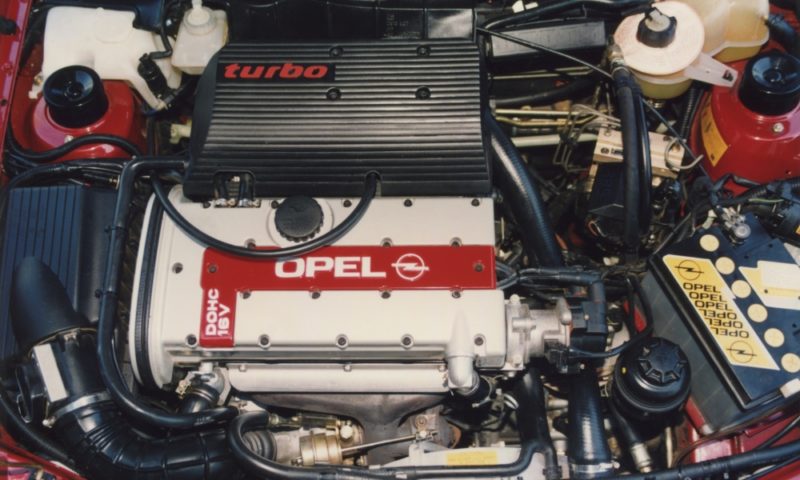We take a closer look at the definitive hot hatches of their era: the Opel Kadett Boss, Superboss and Turbo…
The performance-focused Opel Kadetts of the late-1980s to mid-1990s have become the stuff of legend in South African automotive history. We’re focusing here on the various versions of 2,0-litre hot-hatch Kadetts, spanning two generations of the vehicle.
First there was the “Boss”, the 200i GSi with its s-o-h-c, eight-valve-head naturally aspirated petrol engine developing 95 kW. Next came the 1989 twin-cam, 16 V, 115 kW 2,0 GSi 16V, earning the nickname “Big Boss” (mainly during 1991 to 1992; its official nomenclature changed to 200i CD 16 V).
Then arrived the 200 GSi S that received a power boost to 125 kW via tweaking of the cam profiles to give more lift and overlap. This was dubbed the “Superboss” and 500 were built for homologation for Group N racing.
Lastly, there was the outrageous 200 ts that developed 151 kW with the help of a turbocharger. Part of a new generation of more refined, better-quality Kadett models, by now the “Boss” monikers had run dry, which is a pity as “Ultraboss” may have been fitting.
All this excitement took place in the humble Opel Kadett range – then sold by Delta – over a mere eight years and a pair of generations.
Packaging
With no over-the-top styling, massive wings or fancy interiors, these were real wolves in sheep’s clothing. The Kadett’s bodywork and trim were substantially updated in 1993, adding more strength and safety at the expense of extra mass. The booted version of the revised Kadett received the Astra title.
In the United Kingdom, Opels are badged as Vauxhalls. That name comes from the Vauxhall Ironworks company, which started life in 1897 and became a subsidiary of General Motors in 1925. Why do I mention this, you ask? Because a number of local General Motors fans import Vauxhall badges and fit them to their Opels to stand out a bit more from the crowd (and perhaps to trick the non-petrolheads into thinking their cars are more exclusive).
Powertrain
Opel took its 16 V, 2,0-litre transverse four-cylinder twin-cam (20XE) producing 115 kW and then tweaked it to deliver 125 kW in the Superboss models. Sodium-filled valves helped top-end cooling and it had a head designed by Cosworth, with fuel injection by Bosch Motronic. To cope with the increased power, forged pistons, increased compression ratio and more radical valve timing overlap were employed.
For the 200 ts, Delta added a KKK turbo and, to manage the 151 kW of power, Opel mated a six-speed Getrag gearbox that could handle the extra stress. Six-speed gearboxes were very cutting edge in the 1990s and we clocked the Superboss’ top speed at 223 km/h and the 200 ts at 235 km/h (true speed).
Interestingly, South Africa was the only market in the world to use the turbocharged petrol engine in front-wheel-drive form. Elsewhere, it was mated only to all-wheel-drive models such as the striking Calibra Turbo.
Which one to get…
Any car that has been well cared for, or perhaps restored, should have potential. The turbo cars would have lived an especially hard life, so find out what has been rebuilt and what still needs doing.
What to watch out for
Some aluminium cylinder heads can become porous, allowing oil to ooze into the coolant system and leave a brown emulsion. Changing the oil regularly may help alleviate this problem, but specialist companies should repair it. It was a problem in production that was remedied by forcing the aluminium into the casting die under pressure rather than using gravity.
Availability and prices
There will always be a few available for purchase and some owners spend a lot of cash keeping them running smoothly. This means they won’t sell cheaply unless you are left with some of the fixing up to do yourself.
Interesting facts
When we tested the Superboss, we battled to match the results we got from the Big Boss. A second car was tested, but consultation with Delta’s engineers and testers could not establish the problem. A possible conclusion was that the original Big Boss test unit was producing more than the average output given that no two identically specced engines ever produced exactly the same output.
Another oddity is that the Superboss test car speedometer went up to only 220 km/h so, on the top speed run, the needle went “off the clock” to achieve 223 km/h. The 200 ts rectified this by going overboard with a speedometer reading a very optimistic 280 km/h.
In 1995, the 200 ts was one of the fastest-accelerating cars, outpaced only by the likes of Audi Quattros and BMW M3s. No automatic cars could touch it, either.












